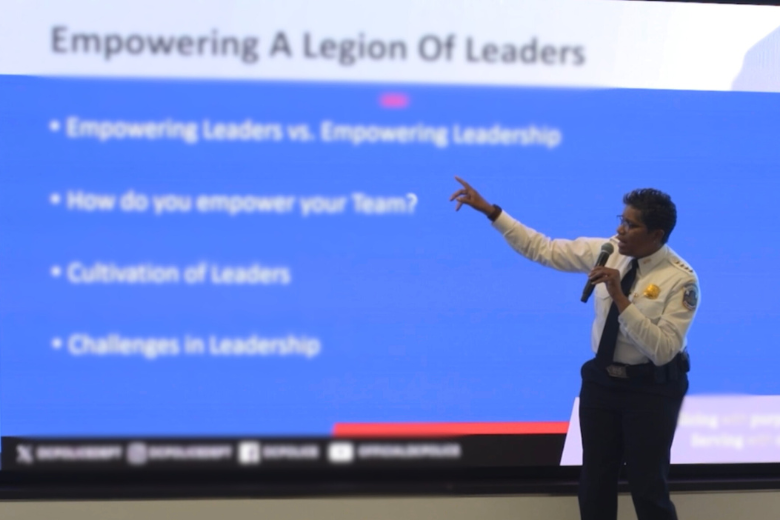The Alaska Aerospace Corp. was left without permanent leadership after Gov. Mike Dunleavy refused to approve a new executive and removed the chair of the corporation’s board without explanation, according to emails and documents obtained by the Daily News.
Alaska Aerospace is a public company that operates a launch site in Kodiak and has sought to generate revenue by attracting clients — ranging from the Missile Defense Agency to private companies — to launch rockets and satellites from a remote corner of the state. But leadership changes and intervention by Dunleavy could hamper the company and stall projects, according to Sean Thomas, who was selected to lead the corporation but had his offer rescinded last month amid pushback from the governor.
:quality(70)/cloudfront-us-east-1.images.arcpublishing.com/adn/T6P3FZGJXNCJBFKLDH2LFCJRQY.jpg)
In August, the corporation’s board offered the chief executive and president position to Thomas, an Alaska executive who had worked in the fuel industry, noting that the hire was subject to approval by the governor’s office. The offer was rescinded after Dunleavy failed to sign off on the hire, forcing the board to launch a new search for a chief executive.
After the board — whose members are subject to appointment by the governor and approval by the Legislature — appeared to question the governor’s policy of signing off on their hiring choices, the governor removed the board’s longtime chair, Robert McCoy.
In doing so, Dunleavy turned to a move he has repeated since winning reelection last year: removing dissenters from public boards. In March he replaced all five members of a board that determines salaries for state officials, paving the way for pay increases for lawmakers, himself, and members of his administration; in June he fired two Susitna road opponents from land management advisory board; and he removed a university researcher from an energy task force leadership post.
Thomas, who was selected as president and CEO by the Alaska Aerospace Corp. board, said he believed Dunleavy rejected his hiring because Thomas and his wife, an Anchorage public school teacher, signed a petition to recall Dunleavy four years ago. McCoy, the board chair, also signed the petition, which was signed by more than 60,000 Alaskans. The petition launched in 2019 amid large cuts proposed by the governor to state services like public education and the university.
Dunleavy’s spokesperson Jeff Turner declined to answer questions about Alaska Aerospace Corp., including why Thomas’ hire wasn’t approved by the governor and why McCoy was removed from the board.
The governor’s approval
The search for a new leader for the Alaska Aerospace Corp. began in March, when the previous chief executive, Milton Keeter, departed. Keeter now works for a launch company in Florida, according to his LinkedIn page.
After a monthslong search process, in August the board selected Thomas, who had previously worked as a business consultant, to serve in the role of chief executive and president of the corporation.
According to a letter dated Aug. 23, the corporation’s board “unanimously approved” offering the position of chief executive and president to Thomas, with a combined salary and benefits package exceeding $358,000.
But the letter stated that “there is a process which we must follow when making a hire of this senior level in state government in Alaska which includes approval by Governor Dunleavy’s Chief of Staff. We look forward to obtaining that approval quickly.”
Such a process is not the norm, according to Scott Kendall, an Anchorage attorney who served as chief of staff to former Gov. Bill Walker and has been involved with other political campaigns, including the campaign to recall Dunleavy. Kendall said the policy of seeking approval from the governor’s office for “senior level” state officials did not exist under the previous administration, and isn’t dictated — or allowed — under state law.
“Although in the prior administration we were certainly made aware of major decisions and hires made by such entities, we did not have or exercise any direct control or veto power over hiring decisions. To do so would undermine the independence the Legislature intended for such bodies and would unduly politicize them. It would also violate the statute,” said Kendall.
Asked if the governor’s approval policy was common procedure, Senate President Gary Stevens, a Kodiak Republican who has been a member of the Legislature for more than 20 years, said he had “never seen that happen before.”
“The board spent a lot of time, a lot of effort, a lot of money actually trying to find a candidate, going through a lot of names, a lot of interviews, and this was the best one they came up with,” said Stevens, who serves as a non-voting member of the board, adding that he thought Thomas would have been “an excellent choice.”
Adam Cook, an Anchorage attorney who works for the corporation, said that Alaska Attorney General Treg Taylor had weighed in on whether the governor had the authority to sign off on the board’s hiring decisions. Asked about the attorney general’s opinion, Department of Law spokesperson Patty Sullivan said by email that “we don’t discuss legal advice for client agencies.”
‘Extended delay’
Thomas’ hiring letter, signed by the board chair, said Thomas could begin the role “as soon as arrangements can be made but no later than Oct. 1.” Thomas signed the letter on Aug. 24, and agreed to begin working on Sept. 18.
But the date came and went without any action from the governor’s office. Thomas began working for the corporation under a separate agreement as a contractor, circumventing the governor’s approval, as he awaited his decision. Weeks went by without communication from the governor’s office on the approval process or a stated reason for the delay, according to Thomas.
In a Sept. 20 email, Craig Christenson, deputy commissioner of the Alaska Department of Military and Veterans’ Affairs, wrote in an email that he was in touch with the governor’s office about Thomas’ appointment, but it had yet to be approved.
“As you know, there is a fine line between being too pushy with the governor’s office and being too demanding,” Christenson wrote.
Stevens said he spoke with Dunleavy after Thomas’ approval had been delayed. The governor “said he would look into it and get back to me. I never heard back,” said Stevens.
On Oct. 6, Thomas wrote directly to Dunleavy’s chief of staff, Tyson Gallagher.
“The extended delay in this straightforward appointment process has evolved into an embarrassing situation. As an Alaskan citizen, an informed voter, and an international business leader based in Alaska over the last two decades, I am deeply concerned about the adverse impact this delay is having on the corporation, its team members, our customers present and future, and the people of Alaska, including and especially my family,” Thomas wrote.
According to Thomas, Gallagher never responded to his email. Gallagher did not respond to multiple requests from the Daily News for comment on the approval policy.
As time went on without approval for his hiring, Thomas said he urged members of the board to reach out to the governor’s office and push for his approval. He also reached out to members of Alaska’s congressional delegation.
‘A change in representation’
On Nov. 16, Dunleavy removed board chair McCoy from the board. In a two sentence letter, Dunleavy said he believed “a change in representation is in the best interests of the public.”
McCoy did not respond to emails seeking comment on his removal. Before joining the University of Alaska, McCoy served as the program manager for space science and technology programs at the Office of Naval Research in Virginia. He has led the Alaska Geophysical Institute since 2011.
Stevens said he had “the greatest respect” for McCoy, and that McCoy did “a tremendous job” chairing the board. The governor’s decision to remove him is “a loss” and “a shame, because he was very effective,” said Stevens.
As director of the Geophysical Institute, McCoy’s membership in the board is dictated by state law, which states that the board of the corporation should include “nine members appointed by the governor,” among them “the director or designee of the Geophysical Institute of the University of Alaska.” McCoy has yet to be replaced.
“The head of that institute is supposed to be on the board and I’m sure the governor’s office knows that,” said Stevens.
The board’s vice chair, Kodiak gym owner Lindsay Knight, declined multiple interview requests.
“I cannot say anything. Way above my pay grade,” Knight said in a text message.
Knight referred questions about the turmoil in the company’s leadership to Maj. Gen. Torrence Saxe, commissioner of the Alaska Department of Military and Veterans’ Affairs, who also serves on the board. Knight referred to Saxe as the “board oversight” — a position that does not exist in statute.
According to statute, the Alaska Aerospace Corp. is “located for administrative purposes within the Department of Military and Veterans’ Affairs and affiliated with the University of Alaska but with a separate and independent legal existence.”
A spokesperson for the Department of Military and Veterans’ Affairs did not respond to multiple emails and requests to interview Saxe.
Vote to terminate
According to meeting minutes, in an Oct. 4 board discussion of the chief executive hiring process, board member Bruce Able “requested the Governor’s office prioritize finalizing the hiring process due to concerns about losing a highly qualified candidate.”
In a Nov. 9 meeting, Knight — the board’s vice chair — “expressed his support for Mr. Thomas and conveyed his willingness to take any necessary steps to ensure a successful onboarding.”
Following former board chair McCoy’s Nov. 16 removal, a Nov. 27 meeting was attended by Jordan Shilling, director of boards and commissions in the governor’s office. That day, the board voted to terminate Thomas’ hiring agreement.
The interim chief executive, John Cramer, emailed Thomas to tell him the corporation’s board “voted to terminate” his hiring agreement.
“AAC does not want to create the impression that the decision to terminate the employment agreement was because of anything that you did or did not do. Outside circumstances made the action necessary,” wrote Cramer, who had been leading the corporation on an interim basis since the previous executive resigned in March.
Cramer declined an interview request, referring questions to Knight.
Asked about the board’s decision, State Rep. Louise Stutes, a Kodiak Republican who serves as a non-voting member of the board, said that Thomas “was just not confirmed” by the administration, but did not provide information about the reason.
Ten days after the board voted to terminate Thomas’ employment agreement, the board met again on Dec. 7, during which the board terminated Thomas’ contractor agreement. Cramer, who twice came out of retirement to serve as interim executive, also departed the company that day, multiple people said.
“I was thrown under the bus and back over a few times,” Cramer wrote in a text message to Thomas after the meeting ended. Thomas shared the text message with the Daily News.
Stutes said Rob Greene, president of the corporation’s launch services company, was chosen to serve as interim executive while another hiring effort begins. But Manilyn Alcaide, an administrative staffer for the company, said there is no chief executive and the company is “currently in a transitional period.”
In Cramer’s text message to Thomas, he said he was “able to get the board to support Rob as signer of documents etc.”
Stevens said the board would “attempt to find a candidate who is acceptable to the governor.”
In an email sent Nov. 29, Thomas told two staff members at CACI International, a defense company that had been planning to work with the Alaska Aerospace Corp., that he would no longer lead the corporation.
Thomas had reached an agreement with CACI during the time he had worked for the Alaska Aerospace Corp. as a contractor, while awaiting his official hire. According to Thomas, representatives of CACI had met with Dunleavy in 2019 “about the opportunity for AAC to partner with them to achieve numerous objectives” but “since that time, nothing but talk has been achieved.”
“I must admit I was a little skeptical when the board selected a businessperson over a tried-and-true launch and range expert,” wrote Tom Steele, a senior staff systems architect with CACI. “I have completely changed my mind over the last seven weeks. Your leadership and vision are exactly what that organization needed to move forward and meet the future launch and test needs of the nation.”
• • •

:quality(70)/cloudfront-us-east-1.images.arcpublishing.com/adn/W7ZPMGOYXZFYTPA7HV5OBQ2GO4.jpg)







:quality(70)/cloudfront-us-east-1.images.arcpublishing.com/adn/JXABNPN7TZEBTFCUFZDZVO4LI4.jpg)
:quality(70)/cloudfront-us-east-1.images.arcpublishing.com/adn/ZAQ4CR6IRZA67MKHOB44FEAP3U.jpg)















/cdn.vox-cdn.com/uploads/chorus_asset/file/24924653/236780_Google_AntiTrust_Trial_Custom_Art_CVirginia__0003_1.png)





/cdn.vox-cdn.com/uploads/chorus_asset/file/25672934/Metaphor_Key_Art_Horizontal.png)
